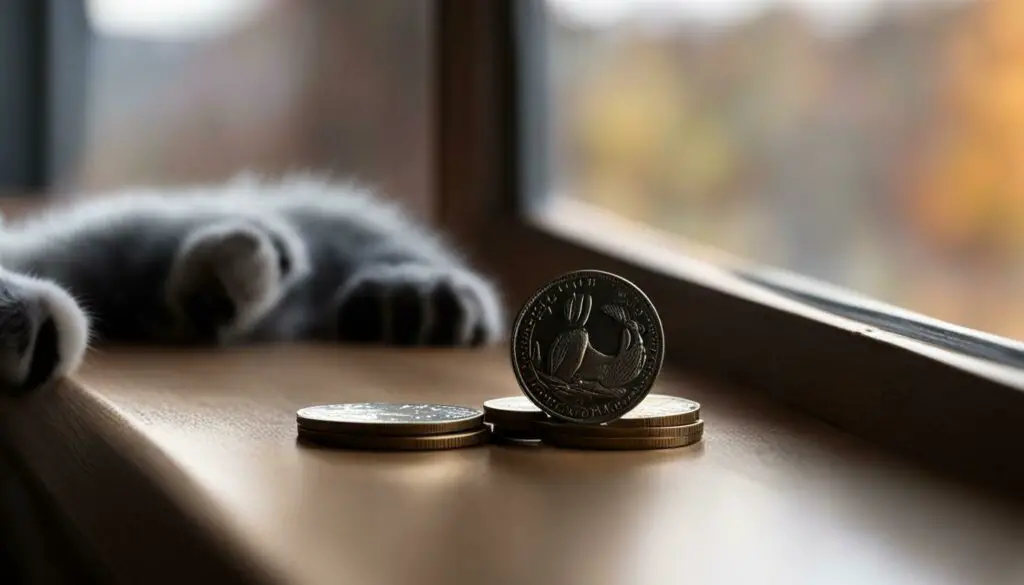Owning a cat comes with its fair share of expenses, and it’s important to understand the costs involved before bringing a furry companion into your home. From initial adoption fees to ongoing expenses, budgeting for a cat requires careful consideration of various factors. In this article, I will provide a detailed breakdown of the expenses associated with cat ownership, offering insights into the average costs and tips for estimating cat expenses.
Key Takeaways:
- The first-year expenses for owning a cat can range from $1,100 to $2,000, including supplies and adoption fees or purchase price.
- Ongoing expenses, such as food, water, and litter, can add up to approximately $300 per year.
- Grooming costs can amount to $300 per year, and boarding or cat-sitting options may come with additional expenses.
- The average annual cost of owning a cat ranges from $555 to $3,405, with an estimated lifetime cost ranging from $4,250 to $31,200.
- Certain cat breeds, like Savannahs, Bengals, and Persians, can be more expensive due to potential medical issues.
- Adopting a domestic or mixed breed cat from a shelter can be a more affordable option.
- Budgeting and finding ways to cut costs without compromising on care are essential for cat owners.
Initial Purchase and Adoption Fees
The first step in bringing a cat into your life is acquiring one, and this can involve various expenses depending on the adoption process or purchase. Whether you choose to adopt from a shelter or buy from a breeder, there are costs to consider. Adoption fees typically range from $50 to $150, which often includes vaccinations, spaying/neutering, and microchipping. These fees help cover the shelter’s expenses and ensure that the cat is in good health before going to its new home. On the other hand, purchasing a cat from a breeder can be more expensive, with prices ranging from $500 to several thousand dollars, depending on the breed and pedigree.
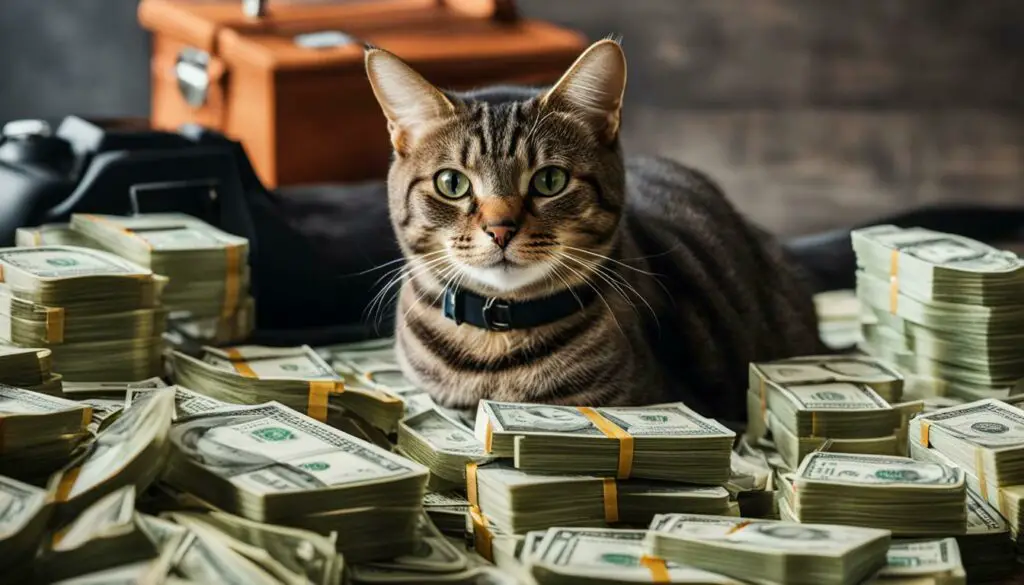
It’s important to note that while adoption fees may seem higher upfront, they often include essential veterinary care and services that would need to be paid for separately if buying from a breeder. Additionally, adopting from a shelter not only saves a life but also supports the rescue and care of other cats in need. So, if you’re looking to bring a furry friend into your home, consider adopting from a shelter as a more affordable and compassionate option.
Essential Supplies and Set-Up
Before bringing your new cat home, you’ll need to ensure you have all the essential supplies in place, which can involve some upfront costs. Here is a breakdown of the important items you’ll need:
- Food and water bowls: It’s essential to provide your cat with separate bowls for food and water. Prices can range from $5 to $20, depending on the material and design you choose.
- Litter box: A litter box is an important part of your cat’s daily routine. Prices vary depending on size and features, but you can expect to pay around $10 to $50.
- Scratching post: Cats need a scratching post to exercise their natural instincts and keep their claws healthy. Prices range from $15 to $50, depending on the size and quality.
These are just a few examples of the essential supplies you’ll need to get started. Keep in mind that prices may vary depending on where you purchase these items and the specific brands you choose. It’s also worth considering any additional items that may be necessary based on your cat’s specific needs, such as grooming tools, toys, or a cat carrier for vet visits or travel.
Remember, providing the right supplies for your cat’s comfort and well-being is crucial for their adjustment to their new home. Investing in high-quality items can go a long way in ensuring their happiness and overall health.
The Importance of Proper Set-Up
Creating a safe and welcoming environment for your new feline friend is essential. Here are a few tips to help you set up your home:
- Choose a quiet area: Cats appreciate a designated space in a peaceful part of your home, away from noise and foot traffic.
- Provide hiding spots: Cats like to have hiding places where they can retreat and feel secure. This can be achieved through a cat bed, blanket, or dedicated cat tree.
- Place litter box strategically: Ensure the litter box is easily accessible, placed away from food and water bowls, and in a quiet area to promote proper litter box usage.
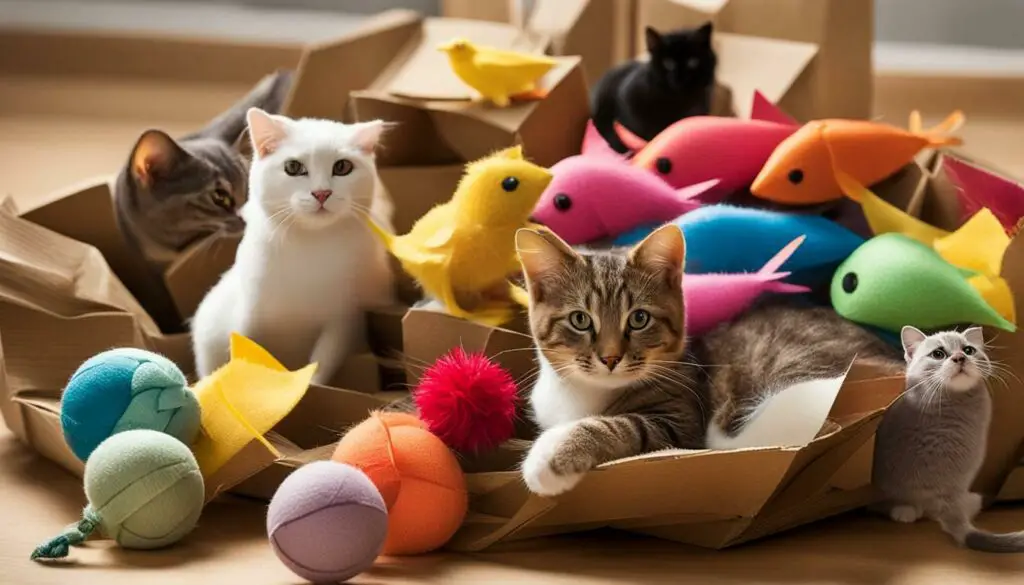
By carefully setting up your home and providing the necessary supplies, you’ll create a comfortable and stimulating environment that will help your cat adjust quickly and thrive in their new surroundings.
| Item | Average Cost |
|---|---|
| Food and water bowls | $5 – $20 |
| Litter box | $10 – $50 |
| Scratching post | $15 – $50 |
These costs are just a rough guide, and prices may vary based on your location and the specific products you choose. It’s important to budget for these initial expenses to ensure you have everything your cat needs for a smooth transition into their new home.
Ongoing Expenses for Food and Litter
Providing your cat with nutritious food and a clean litter box is an ongoing expense that should be factored into your budget. The cost of cat food can vary depending on the brand, quality, and specific dietary needs of your cat. On average, cat owners can expect to spend around $15 to $30 per month on food, with higher-quality or specialized diets potentially costing more.
When it comes to litter, there are various options available, including clay, clumping, and natural alternatives. The cost of litter can range from $10 to $20 per month, with some premium options being more expensive. It’s important to consider your cat’s preferences and any allergies or sensitivities they may have when choosing the right litter for them.
To help you estimate your monthly expenses, here’s a breakdown:
| Expense | Approximate Monthly Cost |
|---|---|
| Cat Food | $15 – $30 |
| Litter | $10 – $20 |
It’s worth noting that these estimates can vary depending on factors such as the size and age of your cat, as well as your location and personal preferences. Additionally, it’s important to schedule regular veterinary check-ups to ensure your cat’s health and well-being, which may incur additional costs.
Caring for Your Cat on a Budget
While owning a cat does come with ongoing expenses, there are ways to cut costs without compromising on the care and love you provide for your feline companion. Here are some tips:
- Look for sales and discounts on cat food and litter at your local pet stores or online.
- Consider buying in bulk to save money on supplies.
- Try making your own cat toys or using household items, such as cardboard boxes and paper bags, to provide enrichment and entertainment.
- Take advantage of low-cost or free spaying/neutering and vaccination clinics in your area.
- Invest in preventive care, such as regular grooming and dental hygiene, to reduce the risk of costly health issues down the line.
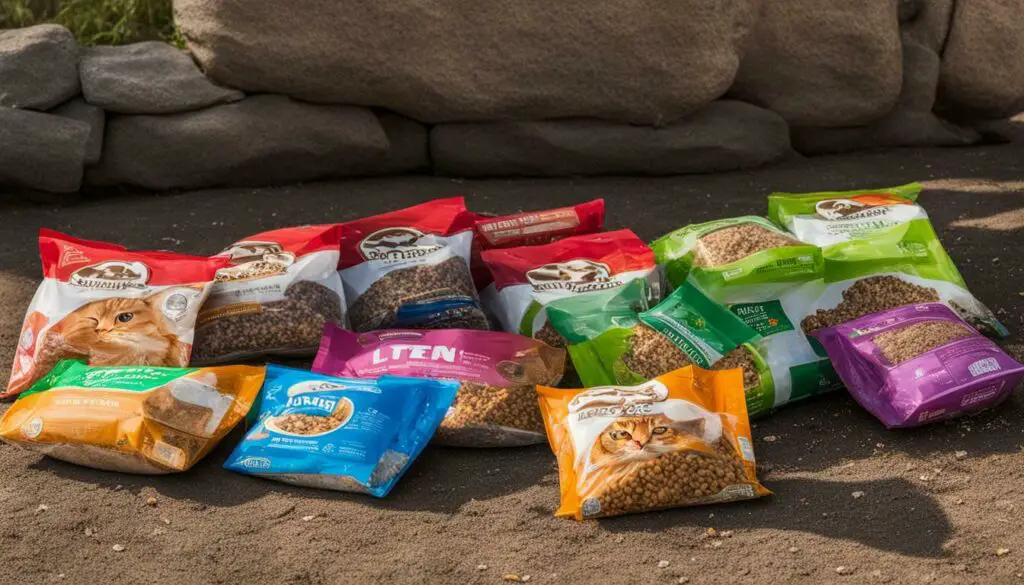
By budgeting wisely and finding creative ways to save, you can ensure that your cat receives the love, care, and essential supplies they need while keeping the cost of cat ownership manageable.
Grooming and Veterinary Care
Taking care of your cat’s health and appearance involves regular grooming and veterinary visits, which can incur additional expenses. Grooming includes activities like brushing your cat’s fur, trimming their nails, and cleaning their ears and teeth. While some cat owners prefer to do these tasks themselves, others opt for professional grooming services, which typically cost around $300 per year.
Veterinary care is essential for keeping your cat healthy. Regular check-ups, vaccinations, and preventive treatments for fleas and ticks are part of responsible pet ownership. The average cost of veterinary care for a cat is around $300 to $500 per year. However, it’s worth noting that the price can vary depending on your location and the specific services required. Emergency veterinary care and unexpected medical issues can also significantly impact your expenses.
If you’re concerned about the cost of grooming and veterinary care, it’s important to research options in your area. Some veterinary clinics offer preventive care packages or discounted rates for routine services. Additionally, pet insurance can help offset the financial burden of unexpected medical expenses. Before purchasing insurance, compare different providers and their coverage options to find the best fit for you and your cat.
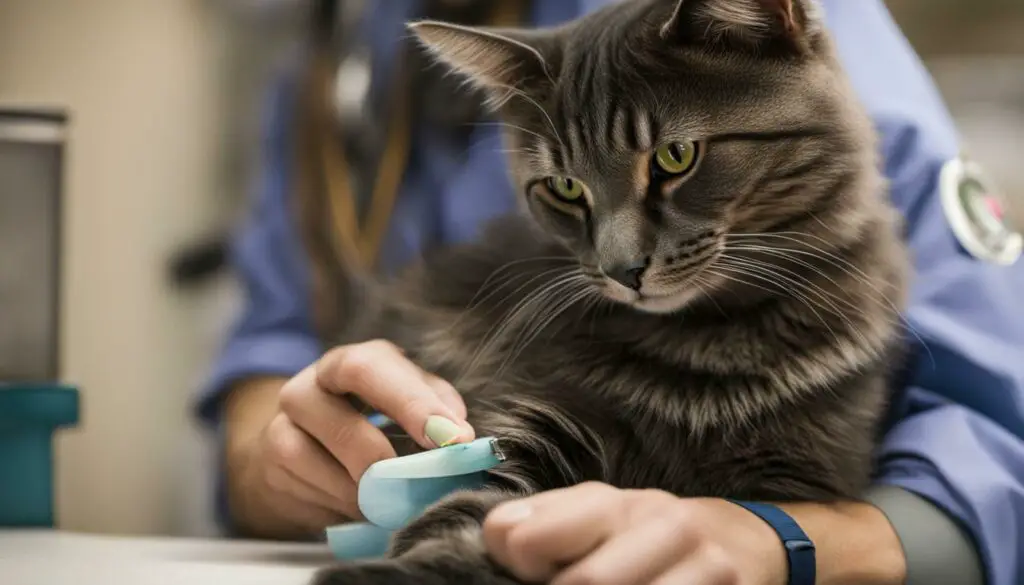
Remember, grooming and veterinary care are crucial for your cat’s well-being. Regular grooming not only keeps your cat’s coat clean and free from matting but also allows you to bond with your furry friend. Veterinary visits help monitor your cat’s overall health and provide necessary vaccinations and preventive care. By prioritizing these aspects of cat ownership, you can ensure your pet stays happy and healthy for years to come.
Boarding and Cat-Sitting
When planning your vacations or work trips, it’s important to consider the costs of boarding your cat or hiring a reliable cat-sitter. While it may be tempting to rely on friends or neighbors to look after your feline companion, professional care ensures that your cat’s needs are met and gives you peace of mind.
Boarding facilities provide a safe and comfortable environment for your cat when you’re away. Prices can vary depending on the facility, the level of care required, and the duration of your cat’s stay. On average, boarding costs range from $15 to $35 per day. It’s important to research different facilities in your area and book in advance to secure a spot.
If you prefer to keep your cat in the familiar surroundings of your home, hiring a cat-sitter is a great option. Cat-sitters can visit your home once or twice a day to feed your cat, clean the litter box, and provide attention and playtime. Prices for cat-sitting services typically range from $15 to $25 per visit, depending on the duration and level of care required.
Alternatives and Tips to Cut Down on Costs
- Ask friends or family members if they’re willing to cat-sit for a lower fee or as a favor.
- Consider joining a pet-sitting exchange network where you take turns caring for each other’s pets.
- Look for deals or discounts offered by boarding facilities or cat-sitting services during off-peak seasons.
- Plan your trips strategically to minimize the number of days your cat needs to be boarded or looked after by a sitter.
By budgeting for boarding or cat-sitting expenses and exploring cost-saving alternatives, you can ensure your cat is well taken care of even when you’re not around. Remember, your cat’s comfort and happiness should always be a top priority.

Breed-Specific Considerations
While all cats require care and attention, certain breeds may have specific needs that can impact their overall cost of ownership. For example, breeds like Savannahs, Bengals, and Persians may require more frequent grooming due to their unique coat types. As a result, the costs associated with professional grooming services can be higher for these breeds compared to others.
In addition, certain breeds may be more prone to health issues, which can lead to higher veterinary expenses. Breeds like Maine Coons, for instance, are prone to hip dysplasia and heart disease, which may require additional medical care and monitoring.
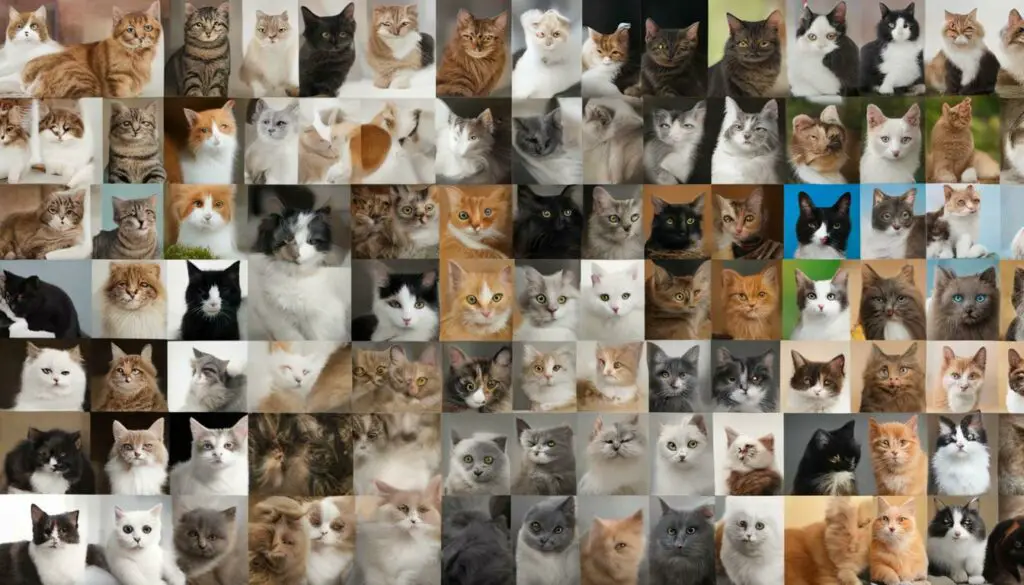
It’s important to consider these breed-specific factors when budgeting for a cat, as they can have a significant impact on the overall cost of ownership. However, it’s worth noting that the love, companionship, and joy that come with owning any cat outweigh the potential expenses. With proper planning and budgeting, you can provide the care your feline friend needs while also managing your finances effectively.
Benefits of Adopting from a Shelter
Adopting a cat from a shelter can be a budget-friendly option, offering both financial benefits and the opportunity to provide a loving home to a feline in need. Not only will you be saving a life and giving a second chance to a deserving cat, but you’ll also be avoiding hefty purchase costs associated with buying a cat from a breeder.
Shelters often have adoption fees that are significantly lower than the cost of purchasing a cat. These fees typically cover the cat’s initial vaccinations, spaying or neutering, and sometimes even microchipping. By adopting from a shelter, you can potentially save hundreds of dollars on these essential procedures.
Furthermore, adopting from a shelter means you’ll be supporting the organization’s mission to rescue and care for homeless cats. The adoption fee you pay goes directly back into helping other cats in need, providing medical care, shelter, and food for those who haven’t found their forever homes yet. It’s a win-win situation that allows you to make a positive impact while also saving on costs.
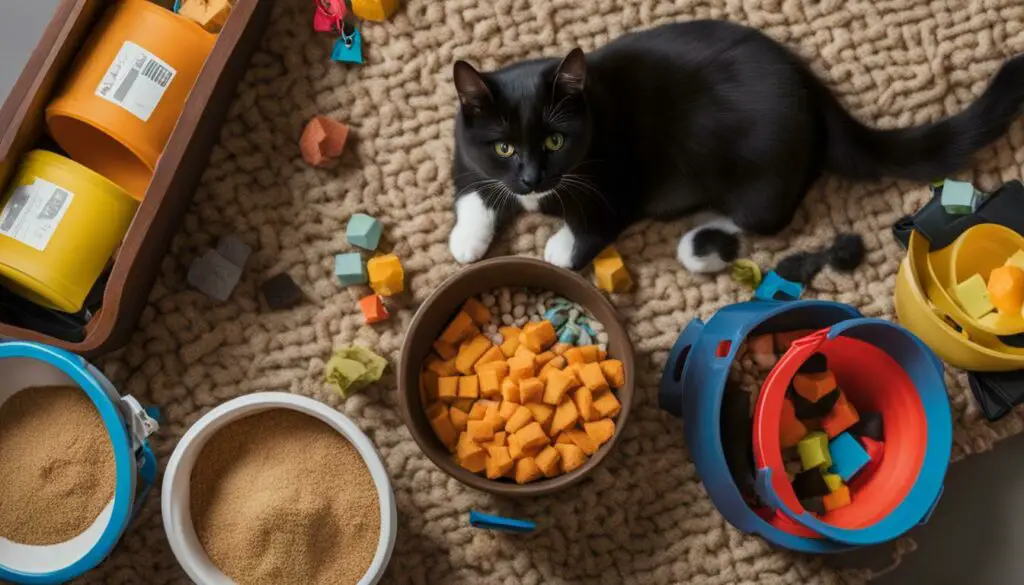
As you consider the financial implications of cat ownership, keep in mind that the expenses associated with adopting a shelter cat are just the beginning. You’ll still need to budget for ongoing costs such as food, litter, grooming, and veterinary care. However, by adopting from a shelter, you’ll have more room in your budget to provide the best care for your new furry friend.
| Expense | Cost Range |
|---|---|
| Initial Adoption Fees | $50 – $200 |
| Yearly Food and Litter Expenses | $300 |
| Grooming | $300 per year |
| Boarding or Cat-Sitting | Varies |
Remember, the love and companionship you’ll receive from your adopted cat are priceless. The joy and fulfillment of providing a safe and loving home to a shelter cat far outweigh any financial considerations.
Budgeting and Cutting Costs
Managing your cat’s expenses effectively is crucial, and this section will offer valuable insights on budgeting and finding cost-saving solutions. By implementing these strategies, you can ensure that your feline companion receives the care they need while also keeping your wallet happy.
1. Create a Monthly Budget: Start by calculating your monthly income and expenses, including your cat-related costs. This will help you determine how much you can afford to spend on your cat without straining your finances. Consider allocating separate funds for food, litter, grooming, and veterinary care.
2. Compare Prices: Don’t be afraid to shop around and compare prices for cat supplies. Look for deals and discounts, both online and in-store. You can often find affordable options without sacrificing quality. Buying in bulk can also help you save money in the long run.
| Expense | Average Annual Cost |
|---|---|
| Food | $150-$300 |
| Litter | $100-$200 |
| Grooming | $150-$400 |
| Veterinary Care | $200-$500 |
3. DIY Grooming: Instead of taking your cat to a professional groomer, consider grooming your cat at home. Regular brushing, nail trimming, and ear cleaning can be done with the right tools and techniques, saving you money on grooming expenses.
“Budgeting for your cat’s expenses is just as important as budgeting for your own. By being proactive and finding ways to cut costs, you can provide a happy and healthy life for your feline friend without breaking the bank.”
4. Preventative Care: Invest in preventative measures to avoid costly medical bills down the line. Schedule regular veterinary check-ups, ensure your cat is up to date on vaccinations, and practice good dental hygiene. Taking a proactive approach to your cat’s health can help you avoid expensive treatments in the future.
Remember, each cat is unique, and their specific needs may vary. It’s important to consider your cat’s individual requirements when budgeting for their expenses. With careful planning and smart choices, you can provide the best care for your beloved feline companion while staying within your budget.
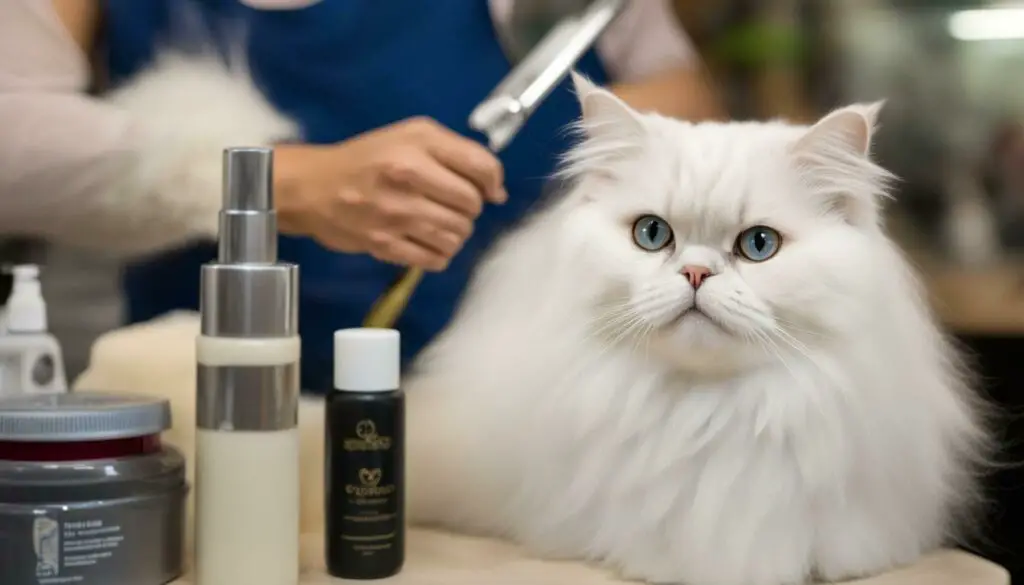
Average Annual and Lifetime Cost Estimates
To help you plan and budget accordingly, we’ll provide estimates of the average annual and lifetime expenses associated with owning a cat. When considering getting a cat, it’s important to understand the costs involved in providing a loving and comfortable home for your feline companion.
The first-year expenses can range from $1,100 to $2,000, which includes the initial purchase or adoption fees, as well as the necessary supplies such as food and water bowls, a litter box, and a scratching post. Ongoing expenses for food, water, and litter can add up to around $300 per year. Grooming costs, including regular check-ups and grooming services, can amount to approximately $300 per year as well.
If you travel frequently or need someone to care for your cat when you’re away, you may need to consider boarding or cat-sitting options, which can add up quickly. The average annual cost of owning a cat ranges from $555 to $3,405, and the estimated lifetime cost ranges from $4,250 to $31,200, depending on various factors such as breed, geographical location, and individual cat needs.
It’s worth noting that certain cat breeds, such as Savannahs, Bengals, and Persians, can be more expensive due to potential medical issues or specialized care requirements. On the other hand, adopting a domestic or mixed breed cat from a shelter can be a more affordable option, with lower adoption fees and potential cost savings on medical treatments.
Estimated Annual and Lifetime Costs:
| Expense | Annual Cost | Lifetime Cost |
|---|---|---|
| Initial Purchase/Adoption Fees | $100 – $1500 | $100 – $1500 |
| Supplies | $500 – $1000 | $500 – $1000 |
| Food | $150 – $300 | $1,500 – $3,000 |
| Litter | $50 – $100 | $500 – $1,000 |
| Grooming | $300 | $3,000 |
| Medical Care | $200 – $400 | $2,000 – $4,000 |
| Boarding/Cat-Sitting | $300 – $500 | $3,000 – $5,000 |
It’s important to budget and find ways to cut costs without compromising on the love and care for your feline companion. By being proactive in managing expenses and exploring affordable options, you can provide a happy and healthy life for your cat while staying within your financial means.
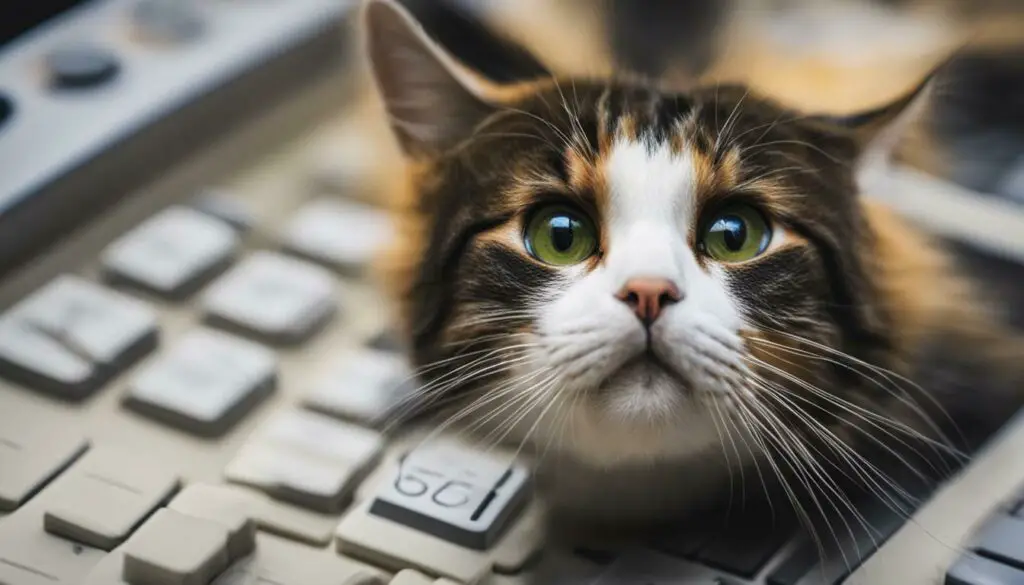
Remember, the joy and companionship that cats bring into our lives are priceless. While there are expenses involved in owning a cat, the love, playful moments, and purrs of contentment are well worth it. By understanding and planning for the costs, you can make an informed decision and provide a loving home for your furry friend.
Considering the Love and Care
Owning a cat is not just about financial costs; it’s about the immeasurable love and companionship they offer. Cats are known for their independent yet affectionate nature, providing joy and comfort to their owners. The bond between a cat and its human is truly special and can have a positive impact on mental and emotional well-being. The cost of owning a cat is worth it when you consider the happiness and companionship they bring into your life.
Not only are cats great companions, but they also offer various health benefits. Interacting with a cat can reduce stress, lower blood pressure, and even decrease the risk of heart disease. Cats have a calming presence and can provide emotional support during difficult times. Their playful and curious nature can bring laughter and entertainment to your home. When you see your cat purring contentedly or curling up beside you, you’ll understand why they are often referred to as “fur babies.”
While the financial costs of owning a cat should be taken into account, it’s important to remember that the love and care they provide are invaluable. The expenses associated with cat ownership can be managed through budgeting and finding ways to cut costs without compromising on the well-being of your feline companion. By providing your cat with a loving and safe environment, regular veterinary care, nutritious food, and plenty of playtime, you can create a happy and fulfilling life for both you and your cat.
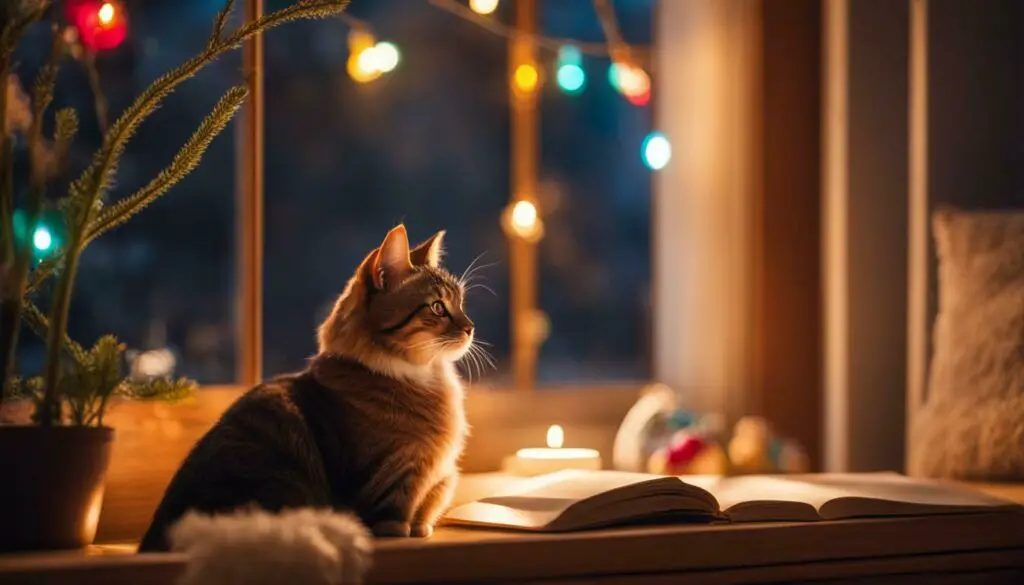
In Conclusion
Owning a cat is a commitment that goes beyond financial considerations. The love and companionship of a cat are immeasurable, and the benefits they bring to your life are priceless. While there are costs associated with cat ownership, the joy they bring far outweighs the expenses. By understanding the costs involved and planning ahead, you can provide a happy and fulfilling life for your feline friend while also ensuring your budget stays balanced.
Making an Informed Decision
By considering the expenses involved and understanding the financial commitment, you can make an informed decision about whether owning a cat is the right choice for you. It’s important to be aware of the costs associated with cat ownership to ensure you can provide the necessary care and support for your feline friend.
When budgeting for a cat, it’s essential to factor in the initial purchase or adoption fees. These can vary depending on whether you choose to adopt from a shelter or purchase from a breeder. Adoption fees typically range from $50 to $150, while purchasing a cat from a breeder can cost anywhere from $500 to $2000 or more, depending on the breed. It’s worth noting that certain cat breeds, such as Savannahs, Bengals, and Persians, tend to be more expensive due to their unique characteristics.
Furthermore, ongoing expenses like food, water, litter, grooming, and veterinary care should be considered. On average, these costs can total around $555 to $3,405 annually, depending on the breed and the individual needs of your cat. Grooming can add an additional $300 per year, while boarding or hiring a cat-sitter when you’re away can also be a significant expense. It’s important to plan for these recurring costs to ensure your cat receives the care they deserve.
| Expense | Annual Cost |
|---|---|
| Food and Water | $200 – $500 |
| Litter | $100 – $200 |
| Grooming | $300 |
| Veterinary Care | $300 – $1000 |
However, it’s important to remember that owning a cat comes with immeasurable rewards. The love, companionship, and joy that a cat brings to your life are invaluable. Cats provide emotional support and can even improve your overall well-being. While there are financial considerations to bear in mind, the bond you develop with your feline companion makes it all worthwhile.
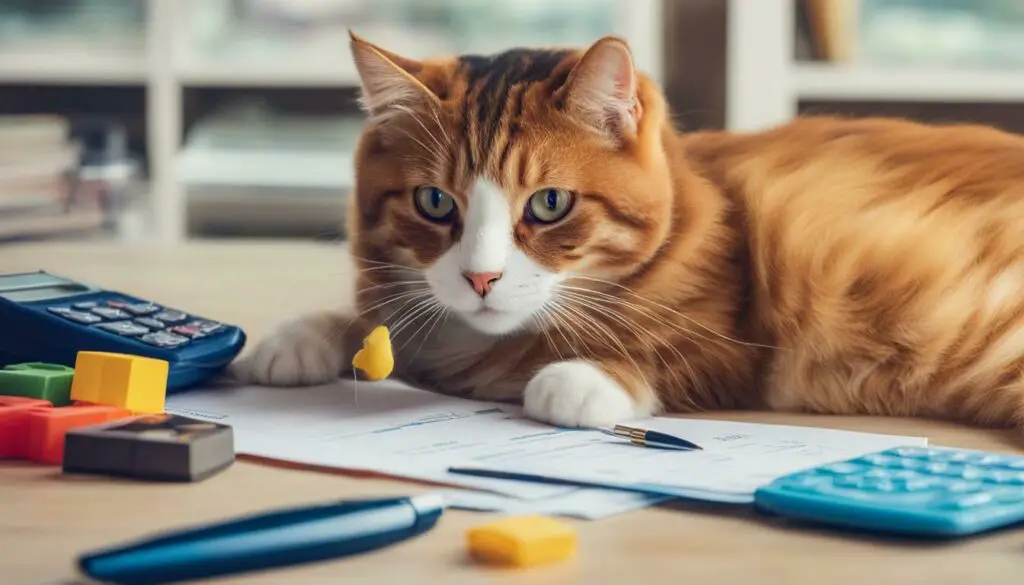
Conclusion
Owning a cat comes with financial responsibilities, but with proper planning and budgeting, you can enjoy the companionship of a feline friend while managing the costs effectively. When considering getting a cat, it’s important to understand the costs involved in owning one. The first year expenses, including purchasing supplies like food and water bowls, litter box, scratching post, and initial adoption fees or purchase price, can range from $1,100 to $2,000.
The ongoing expenses for food, water, and litter can add up to around $300 per year. Additional costs to consider include grooming, which can cost $300 per year, and boarding or cat-sitting options when you’re away, which can add up quickly. Overall, the average annual cost of owning a cat ranges from $555 to $3,405, and the estimated lifetime cost ranges from $4,250 to $31,200.
It’s worth noting that certain cat breeds, such as Savannahs, Bengals, and Persians, can be more expensive due to potential medical issues. On the other hand, adopting a domestic or mixed breed cat from a shelter can be a more affordable option. It’s important to budget and find ways to cut costs without compromising on love and care for your feline companion.
FAQ
How much does it cost to own a cat?
The average annual cost of owning a cat ranges from $555 to $3,405, and the estimated lifetime cost ranges from $4,250 to $31,200. However, these costs can vary depending on factors such as breed, location, and individual needs.
What are the initial purchase and adoption fees for a cat?
The initial costs of acquiring a cat can range from $1,100 to $2,000, including adoption fees or the purchase price. Adopting from a shelter is often a more affordable option, with adoption fees typically ranging from $50 to $150.
How much do essential supplies for a cat cost?
Setting up your home for a cat can cost around $100 to $200 for essential supplies such as food and water bowls, litter box, scratching post, and toys. These costs may vary depending on the quality and brand of the items.
How much do food and litter cost for a cat?
On average, you can expect to spend around $300 per year on cat food, water, and litter. The cost may vary depending on the type and brand of food, as well as the amount of litter used.
How much does grooming and veterinary care cost for a cat?
Grooming expenses for a cat can range from $100 to $500 per year, depending on the grooming services required. Veterinary care, including routine check-ups and vaccinations, can cost around $200 to $400 per year.
How much does boarding or cat-sitting cost?
Boarding facilities or hiring a cat-sitter when you’re away can range from $15 to $50 per day. The cost may vary depending on the location, services included, and the duration of the stay.
Are certain cat breeds more expensive to own?
Yes, certain cat breeds like Savannahs, Bengals, and Persians can be more expensive to own due to potential medical issues or specialized care requirements. The cost of owning these breeds can range from a few hundred to several thousand dollars per year.
What are the benefits of adopting from a shelter?
Adopting a cat from a shelter is not only a compassionate choice but can also be more affordable. The adoption fees are typically lower than purchasing from a breeder, ranging from $50 to $150, and most shelter cats are already spayed/neutered and vaccinated.
How can I budget and cut costs when owning a cat?
To budget effectively, consider buying supplies and food in bulk, finding affordable grooming options, and exploring low-cost veterinary clinics. Additionally, you can save money by making DIY toys and using natural and eco-friendly alternatives for litter and cleaning products.
What are the average annual and lifetime costs of owning a cat?
The average annual cost of owning a cat ranges from $555 to $3,405, while the estimated lifetime cost ranges from $4,250 to $31,200. These costs include initial purchase or adoption fees, supplies, food, litter, grooming, veterinary care, and potentially boarding or cat-sitting expenses.
Is owning a cat worth the expenses?
Absolutely! While there are costs associated with owning a cat, the love, companionship, and joy they bring are priceless. By budgeting and planning ahead, you can provide your feline companion with a happy and healthy life without compromising on their care.
How can I make an informed decision about owning a cat?
To make an informed decision, it’s important to understand the costs involved in owning a cat and assess your budget and lifestyle. Consider factors such as the breed, your living situation, and the time and commitment required for proper care. Researching and consulting with professionals can also provide valuable insights.
What is the conclusion regarding the cost of owning a cat?
Owning a cat involves various expenses, ranging from initial adoption fees or purchase price to ongoing costs for supplies, food, litter, grooming, veterinary care, and potentially boarding or cat-sitting. By budgeting effectively and considering the unique needs of your cat, you can provide a loving home without breaking the bank.
Source Links
- https://www.dailypaws.com/living-with-pets/pet-costs/cost-of-owning-a-cat
- https://pettable.com/blog/cost-of-owning-a-cat
- https://cats.com/how-much-does-it-cost-to-own-a-cat

